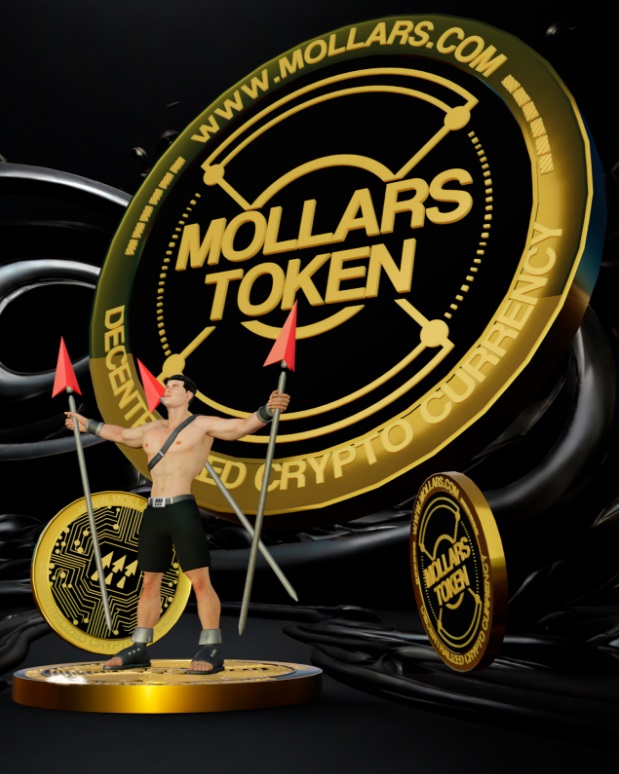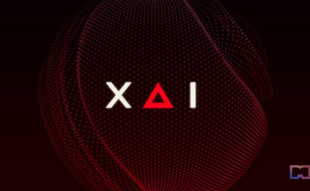A Massive, Single Bitcoin ($BTC) Transaction Costs Crypto Trader Over US $173K
In 2024 the issue of rising trade fees associated with Bitcoin transactions has taken center stage. Tuesday morning, a staggering transaction fee of $173,148 has raised alarms among traders and prompted a quest for alternative solutions.
According to Whale Alert, the sum of nearly $175K was lost in a single BTC transaction. This reality-check has given the Bitcoin community a rude awakening, which is coming to the conclusion that something in the network has to be done regarding the excruciating taxes per transaction.
But it appears, the creator(s) for a new crypto project beat everyone to the punch, realizing in 2023 there was a need for a $BTC alternative.
Mollars: A Fee-Reducing Alternative
Mollars, an Ethereum-Blockchain-based token, distinguishes itself as a ‘store-of-value,’ akin to Bitcoin but with the added benefits of lower fees and faster transactions. Launched just a couple of weeks ago, the Mollars ICO has swiftly gained attention as a promising alternative to the fee-related challenges plaguing Bitcoin transactions.
Comparing the Fees: Bitcoin vs. Mollars
The average trade fee for Bitcoin hovers around $39, while Ethereum boasts a more economical average fee of $7. The shocking $173,148 trade fee on Bitcoin would have been a mere $32,000 if the transaction involved Mollars tokens, showcasing the potential of Mollars as a fee-reducing alternative.
Mollars is now being touted as a potential “Bitcoin Killer” due to its fee-reduction capabilities and its ability to store value. The success of its presale, selling over 700 thousand tokens so far, has fueled optimism among traders seeking refuge from the burdensome fees associated with Bitcoin transactions.
Cathie Wood’s Insight: Bitcoin’s Growth and Mollars’ Potential
Renowned investor Cathie Wood has added her perspective to the discussion, predicting an extraordinary +3386.26% return on investment for Bitcoin by 2030, reaching an impressive $1,500,000.
In that notion, this 3386.26% growth may not be worth the risk for investors who have owned BTC since 2011. Since then, the world’s largest crypto has already grown a much more incredible amount, +20,000,000% since its initial coin offering.
In general, the vast majority of crypto billionaires have made the most profits by investing in a promising token during its ICO. As these new currencies enter the market, the surge in blockchain activity and adoption is often enough to cause it to gain an unimaginable amount of value in the early stages of public discovery.
Although $BTC has shown impressive yield performance, its price hikes are contingent on demand, and this demand can be diminished by a competitor offering lower fees.
At its core, Bitcoin’s fundamental premise centers around sparing crypto traders from conventional banking fees and embracing decentralization to sidestep governmental control.
However, in recent times the currency appears to deviate from the conventional wisdom that peer-to-peer payments should eradicate banking fees.
Contrastingly, the Ethereum blockchain has effectively addressed the fee dilemma. It facilitates peer-to-peer transactions at significantly accelerated speeds, incurring only 20% of the expenses that Bitcoin is imposing on its users ostensibly for miner compensation. This is precisely why the official Mollars token will be rooted in the more active and popular ‘Ethereum blockchain’.
Mollars Tokenomics
The Mollars ICO boasts distinctive features that set it apart in the market. The fully decentralized token ensures that no single owner holds control. All tokens will be accessible through the ICO or public crypto exchanges, ensuring a fair and transparent distribution process.
This decentralization makes it impossible for Mollars to become a ‘rug pull’. After its ICO, the currency becomes ownerless, meaning that the only people in control are the holders themselves.
Total Supply and Ownership Dynamics
With a total supply of 10M [million] tokens, Mollars aims to redefine ownership dynamics by ensuring that no person receives tokens for free. This commitment to fair distribution enhances the credibility of Mollars as a promising solution to the pressing issue of escalating Bitcoin trade fees.
Mollars (MOLLARS) To Reach 1-Million Tokens Sold In Only A Few Weeks of It’s ICO token presale launching
Will the $Mollars token’s founder(s) keep coins?
The creator of the ‘better Bitcoin’ tweeted this on January 16th.
“Selfless in the release of this better #StoreOfValue token. I, the Creator of Mollars nor those helping me develop will retain any $MOLLARS tokens free of charge. We must get our tokens the same way as anyone else if we should choose to have them.”
If that plan follows through, as expected by credible sources, there is no way to rug pull or scam as the crypto trading world will own the entire Mollars supply of 10MM tokens. Founders nor developers will be able to access liquidity pool assets without being invested themselves first. The full supply is being sold on exchange or during the ICO.
Does Bitcoin founder, Satoshi Nakamoto, have any Bitcoins himself?
This move will trump Bitcoin once more, as Satoshi Nakamoto the founder of the OG cryptocurrency has 1-million Bitcoins according to Arkham Intelligence. The value of this supply today would be just over $40B [billions].
1M tokens is also just under 20% of the total supply of Bitcoins minted. A ‘deserving reward’ by some accounts but the alternate reality, Satoshi could be or possibly is manipulating the Bitcoin price at will with such a large supply held.
And with a founder holding such a large supply, it’s not truly decentralized. Nakamoto could essentially be playing the role of governor to the popular digital currency, inflating or deflating the coin’s price with self-interests.
In layman’s terms, it’s not completely autonomous.
On the other hand, if Mollars follows its whitepaper plans, it is fully decentralized and autonomous. What the majority ‘think’ Bitcoin is.
Bitcoin vs Mollars: 2024’s Battle For Best Deflationary Token
This new initial coin offering for Mollars could start what becomes 2024’s battle for the best deflationary token of all-time and create a polar shift in the crypto world. Saving users 80% of their transaction costs is enough reason to move massive amounts of traders to the new cryptocurrency.
With the Mollars.com token presale now racing towards 725,000 tokens sold in the early stages of its ICO and an average of 83,000 tokens being sold per day over the last week, the demand makes the future of $MOLLARS look very promising.
Both Bitcoin and Mollars rely on demand to increase the price. However, Mollars has a total supply of 10M tokens while Bitcoin has a total supply of 21M coins. At the current rate, Mollars too will become a crypto sold in fractions, referred to as ‘Molls,’ and in record time. The ICO is expected to close before February 2024’s end and the remaining 6M tokens for exchanges could sell out in 74 days at the current rate of demand.
The price of Mollars (MOLLARS) will continue to rise at a rapid rate until it cools down, with analysts predicting a $10 (USD) value becoming a reality within 3 months. And that estimate is highlighted as a ‘low-ball’ figure.
Long-term estimates suggest the ICO will strike a parabolic uptrend run over the next 10-years if demand is maintained. If this happens, the token could possibly see a +9,500,000% increase in value, following the historical trends of the original store-of-value token, Bitcoin (BTC).




